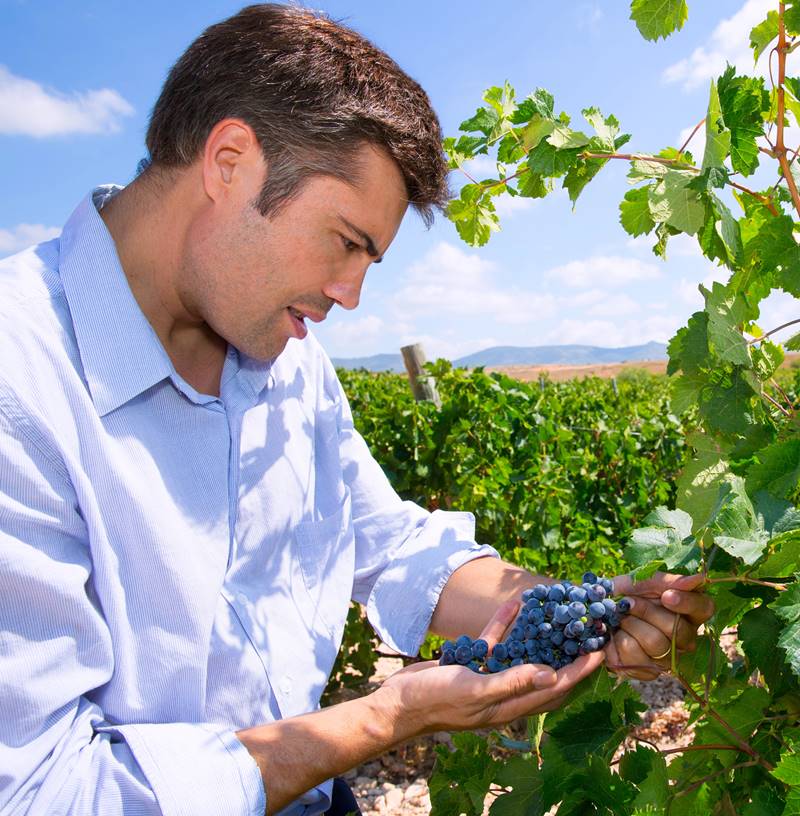Tempranillo's Reign May Be Over
Study Unveils Climate Change Solution: Ancient Grapes Could Be Spain's Lifeline Against Climate Change
2024-07-11

In the face of the relentless advance of climate change, Spanish viticulturists are exploring innovative solutions to safeguard their winemaking heritage. Among these, two relatively unknown grape varieties, Benedicto and Moribel, have emerged as promising candidates. These varieties, related to the renowned Tempranillo, could play a crucial role in helping vineyards adapt to the increasingly harsh conditions brought about by rising temperatures and prolonged droughts.
Researchers at the Institute of Vine and Wine of Castilla-La Mancha (IVICAM) have been leading efforts to study these grapes, uncovering their potential in the face of climate adversity. According to the Regional Institute for Agri-Food Research and Development (IRIAF), preliminary results are encouraging. Benedicto and Moribel, which are a progenitor and a descendant of Tempranillo respectively, show remarkable resilience to heat stress and water scarcity. This could make them valuable assets for the future of Spanish viticulture.
Spain, a country famed for its rich winemaking tradition, faces mounting challenges due to climate change. Each year, increasing heat and extreme weather events threaten to alter the landscape of wine production significantly. A recent study warned that up to 90% of traditional wine-growing regions in the Mediterranean and southern Spain might be at risk of disappearing by the end of the century due to excessive drought and frequent heatwaves.
Tempranillo, a grape variety celebrated worldwide for its role in producing some of Spain's finest red wines, is particularly vulnerable. Currently planted across more than 201,000 hectares, Tempranillo is a cornerstone of many Spanish Denominations of Origin (DOs). However, as temperatures rise, its production faces substantial threats. According to a 2022 article by María Concepción Ramos of the Universitat de Lleida and Fernando Martínez de Toda Fernández of the University of La Rioja, elevated temperatures and water stress could accelerate the grape's phenological stages. Flowering, veraison, and harvest might occur more than 10 days earlier in the warmest years. By 2050, even under controlled emissions scenarios, the growth cycle of Tempranillo could advance by eight to ten days.
These shifts could compromise the grape's acidity and the concentration of key compounds like anthocyanins, which are critical for maintaining the balance and quality of the resulting wines. Winemakers are already implementing strategies to mitigate these impacts, such as planting at higher altitudes, moving to cooler northern regions, and altering pruning techniques. Additionally, there is a concerted effort to identify alternative clones or grape varieties better suited to the changing climate.
The Promise of Benedicto and Moribel
In this context, the work of IVICAM has become increasingly significant. The research team, driven by the doctoral thesis of Sergio Serrano Parra, has been investigating which grape varieties can withstand the extreme heat and water scarcity expected to become more common. Their studies have revealed that Benedicto outperforms Tempranillo in several qualitative analyses, positioning it as a strong candidate for future viticulture.
Moribel, the descendant of Tempranillo, also shows great promise. It has higher acidity levels compared to Tempranillo, which could be crucial for producing well-balanced wines in a warmer climate. Both Benedicto and Moribel performed well in sensory evaluations. Interestingly, the wines made from these grapes, while sharing a similar aromatic profile to Tempranillo, were preferred by tasters, suggesting that these varieties could not only preserve but potentially enhance the quality of wines under more challenging environmental conditions.
As climate change continues to reshape the global wine industry, the need for adaptive strategies becomes ever more pressing. Spain's exploration of ancient grape varieties like Benedicto and Moribel highlights a proactive approach to ensuring the resilience and sustainability of its vineyards. These efforts may pave the way for a new era in Spanish winemaking, where tradition and innovation coexist to meet the challenges of the future.
Young sommeliers and wine enthusiasts might soon find themselves learning about Benedicto and Moribel alongside the traditional staples of Tempranillo, Graciano, and Mazuelo. As research progresses and these grapes gain recognition, they could become key players in maintaining the legacy and excellence of Spanish wines amid the realities of a warming world.
Founded in 2007, Vinetur® is a registered trademark of VGSC S.L. with a long history in the wine industry.
VGSC, S.L. with VAT number B70255591 is a spanish company legally registered in the Commercial Register of the city of Santiago de Compostela, with registration number: Bulletin 181, Reference 356049 in Volume 13, Page 107, Section 6, Sheet 45028, Entry 2.
Email: [email protected]
Headquarters and offices located in Vilagarcia de Arousa, Spain.